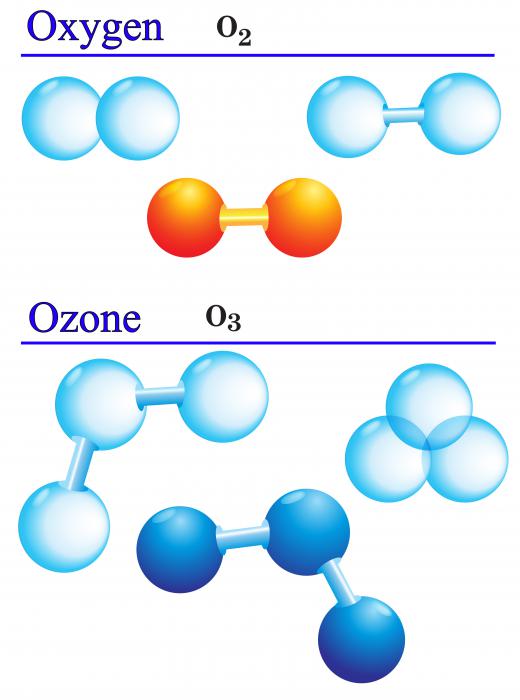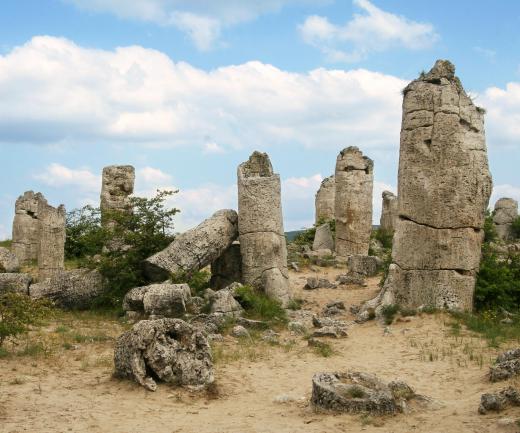What Was the Permian-Triassic Extinction Event?
 Michael Anissimov
Michael Anissimov
The Permian-Triassic extinction, informally known as the Great Dying, the P-Tr boundary or "the mother of all mass extinctions," is believed to be the most severe extinction event in the history of life on Earth. Occurring about 250 million years ago, the Permian-Triassic extinction was a relatively sudden event, lasting less than 80,000 years, with the most severe pulses lasting as little as 5,000 years. About 96 percent of marine species and 70 percent of terrestrial vertebrate species went extinct, with many important Paleozoic families, such as sea scorpions, trilobites, jawless fish and armored fish dying out completely. Overall, about 90 percent of species were wiped out, in contrast with the demise of only 60 percent of species in the Cretaceous-Tertiary event 65.5 million years ago, which wiped out the dinosaurs.
Slow Recovery

Life’s recovery after the Permian-Triassic extinction was the slowest ever, requiring 5-10 million years rather than the typical less than 1 million. The few genera that survived went on to become worldwide in extent, arguably the least diverse that life had ever been since the beginning of the Cambrian. Lystrosaurus, a medium-sized herbivore that is the ancestor of all mammals, made up 90 percent of all terrestrial animals for millions of years after the extinction event. The Permian-Triassic extinction is also the only known mass extinction of insects.
Drastic Changes

Plant life was devastated. Perhaps 95 percent of all land plants were exterminated. In many areas, river flow patterns changed from meandering to braided, much like they were during the early Silurian, prior to the evolution of land plants. There was a brief worldwide fungal spike, caused by a vast increase in the amount of dead organic material relative to the amount of living organic material. This portion of the fossil record is powerful evidence that the extinction was relatively brief, rather than occurring as a gradual process that wiped out large numbers of genera over time.
Possible Causes
After extensive debate and analysis, scientists have come to a general consensus of what caused the Permian-Triassic extinction. At first, scientists suspected an asteroid impact, much like what is believed to have killed the dinosaurs. A telltale iridium layer, expected to be deposited by a large asteroid impact, is missing from the Permian-Triassic boundary, however.
Instead, blame has fallen on a large, and extended supervolcano eruption that formed what is called the Siberian Traps. The Siberian Traps were formed by lava being pumped out around 0.24 cubic miles (1 cubic kilometer) of lava every year for 40,000–200,000 years, at least 20 percent of it pyroclastically — ejected upwards violently rather than released as a runny ooze. Initially, this would have blocked out the sun and caused global cooling, and much of land life would have been disrupted by thick layers of molten ash deposited across a region roughly the size of Asia.
The Role of Methane Clathrates
It is not thought to be the volcanism alone which caused the Permian-Triassic extinction. One of the biggest clues from the strata of the time period is an increase in the ratio of carbon-12 isotope to carbon-13. After scratching their heads for many years about the precise cause of the change, scientists believe that only one event could have caused a change as large as the one measured: the mass release of methane clathrates from the world’s oceans.
Methane clathrates are methane molecules trapped in a matrix of ice crystals, located about 0.3-0.6 miles (0.5-1.0 km) underneath the continental boundaries of the world. Estimates of the quantity of methane clathrates in the world’s oceans today range from 3,000-20,000 gigatons, and the amount is thought to have been similar prior to the Permian-Triassic boundary. The Siberian Traps eruptions mainly poured their lava into areas composed of shallow seas, which would have caused the mass release of methane. Methane is about 20 times more effective at causing global warming than carbon dioxide, and it would have been released in great quantities.
High Temperatures, Little Oxygen
Methane being released would have caused the Earth, including the oceans, to warm, further releasing more methane clathrates and accelerating the warming. The majority of the world’s clathrates might have been released in a time span as little as 5,000 years, causing catastrophic warming. This warming would decrease the temperature gradients between the poles, preventing the transfer of nutrients from land to sea, causing massive algal blooms that consumed the oceans’ oxygen and causing widespread anoxia, which is a reduction in oxygen levels.
Without oxygen, most of the marine fauna perished. Anaerobic green sulfur bacteria thrived, displacing other bacteria and causing large hydrogen sulfide emissions, destroying the ozone layer and exposing land life to damaging ultraviolet (UV) rays. Evidence of UV damage has been found in plant fossils from the era.
AS FEATURED ON:
AS FEATURED ON:












Discuss this Article
Post your comments